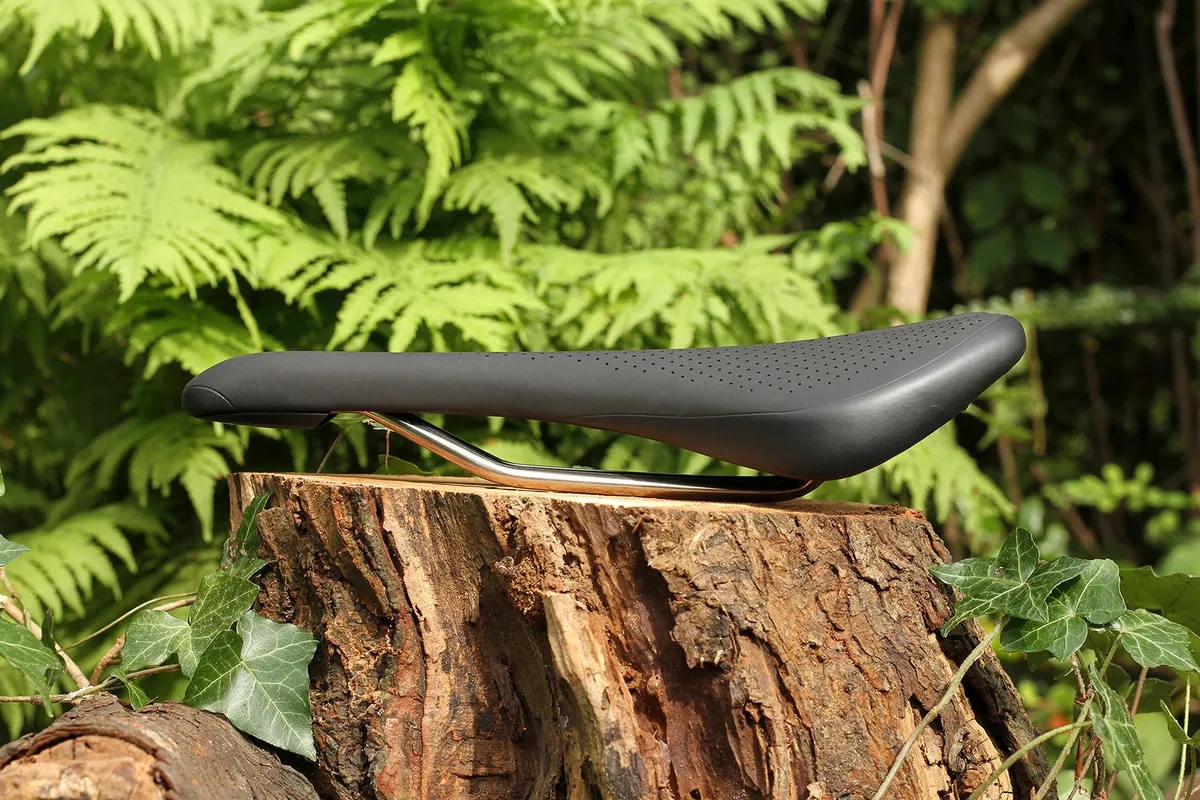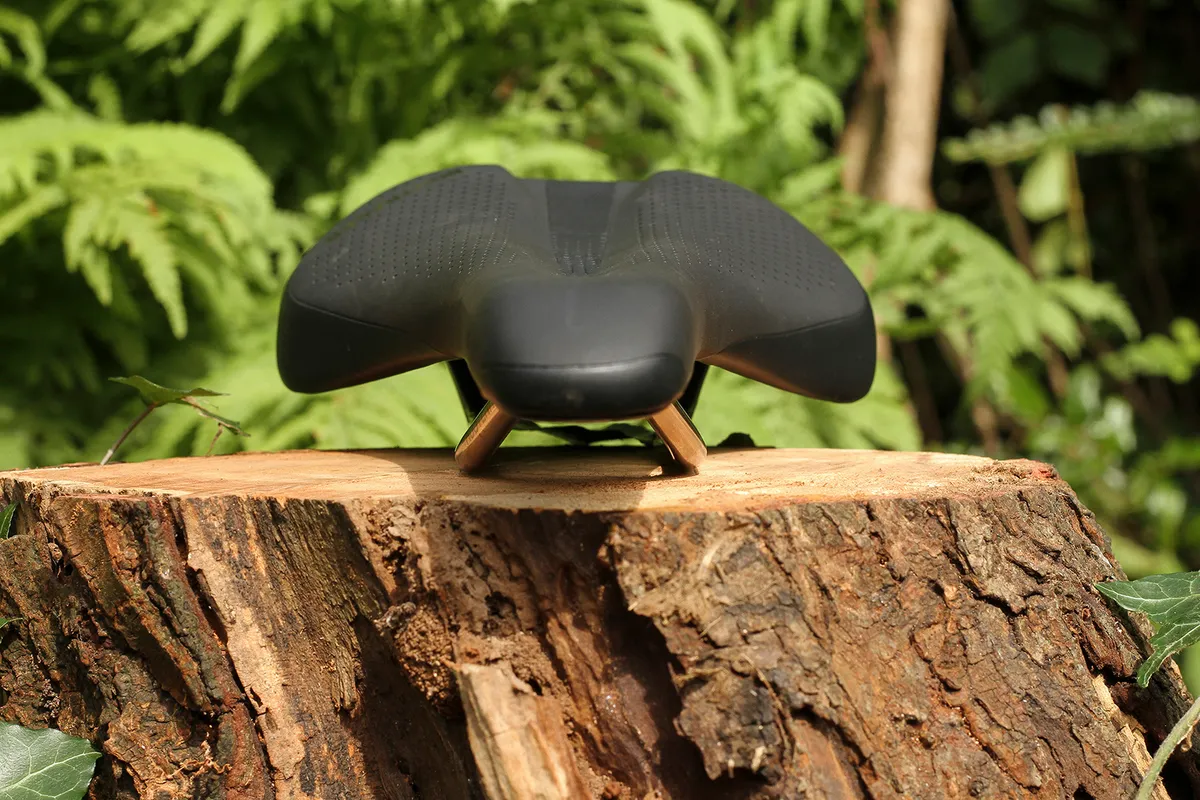Recognised as a stalwart of creating performance cycling kit, Trek’s in-house accessory brand Bontrager has a wealth of resources at its disposal, which puts it in a good place to make some top performing kit. So, how does the Arvada Elite saddle fare with that level of backing?
Bontrager Elite Arvada saddle details and specifications
It’s fair to say the Arvada is feature-laden, with rails made from Austenite — which is just a very posh name for stainless steel — that Bontrager claims are lighter than hollow titanium alloy equivalents, and in-built flex on the hull to help with bump absorption that’s aided by multiple densities of material.
The pressure relief channel is 225mm long x 25mm wide at its widest point and, at 274mm, it’s a fairly average length saddle.

The Arvada saddle comes in three widths: 128mm, 138mm and 148mm. Each width, Bontrager claims, is individually designed to have its own curve.
The saddle’s intended riding posture is best suited to neutral pelvic rotation, which translates to a fairly upright position.

Bontrager Elite Arvada saddle performance
When climbing in a seated position, on both steep and moderate climbs, there were noticeable levels of pressure on the soft tissue area in front of the sit bones.
After prolonged climbs this did lead to numbness and discomfort of the genitalia, and no amount of weight shifting or saddle repositioning in the seat clamp helped cure the issue.
While it is worth noting that this saddle is on the narrower side of my recommended width, I didn’t feel it was the width that caused the issues I experienced. Instead, I think it was down to the saddle's overall concave shape which parted my sit bones, intensifying pressure on the perineum.
Most of this pressure was caused by the two ridges on the outer edges of the pressure relief channel, created by the saddle’s overall curved shape.
As the highest points of the saddle, the two ridges either side of the dip really focus your weight away from your sit bones and into a very specific area along the edges, which really hinders comfort.
Downhill performance is a different matter, though. In fact, the smooth surface and relatively skinny width meant the saddle went entirely unnoticed while descending — a true compliment for a bit of kit that’s designed to do a job with no fuss.

It was possible to grip the saddle with my knees to control the bike and it didn’t feel like it was too small, slippery or in anyway obstructing my ability to ride.
Overall, this is a good saddle for those heading for the downs, but its climbing comfort is severely compromised and there are other saddles out there that strike a much more rewarding balance.
Product
| Brand | bontrager |
| Price | 145.00 AUD,90.00 GBP,170.00 USD |
| Weight | 226.0000, GRAM (138mm) - |
Features
| br_rails | steel |
| br_cutOut | no |
| br_gender | mens |
| br_length | 270mm |
| br_availableWidths | 128mm, 138mm, 148mm |

